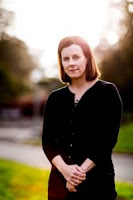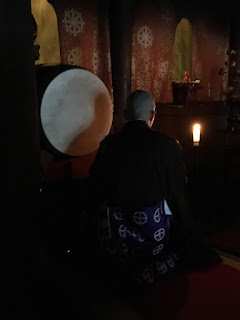Ohio Renaissance
Guest Post by Martha Conway,
Author of THE UNDERGROUND RIVER
In sixteenth century Ohio, there were no newspapers or printing presses, no mills or grindstones, no churches or cathedrals. There weren’t even any brick chimneys. The Native Americans who lived in the area included Chippewa, Ottawa, and Kickapoo. A few French explorers and missionaries wandered about, as well as a handful of European immigrants who were mainly fur traders or
coureur de bois, backwoodsmen. In the Great Lakes region, more than a dozen Native American tribes collectively called themselves Wendat and formed what was known as the Huron Confederacy. Many of these lived along the Ohio River, too.
In the seventeenth century, the Beaver Wars (think Iroquois against everyone else) drove everyone out of Ohio for nearly one hundred years. That’s right, for nearly one hundred years the area was virtually empty of people. Can’t imagine that happening in Europe!
The Ohio River that I wrote about in my novel
The Underground River— which takes place two centuries later — was a vastly different place. However, these changes had only taken place very recently. Until the turn of the nineteenth century, the river traffic was still mostly canoes. Slowly, European settlers came in with their keel boats and flatboats and barges. In 1793, Jacob Meyers started the first passenger keelboat service between Cincinnati and Pittsburgh, and in 1798 John Fitch built the first steamboat on the Ohio River.
In 1830, an actor/director named William Chapman built the first “Floating Theatre” on the Ohio River: a rectangular shed (the theatre) nailed onto a barge, which he poled downriver. His theatre troupe was comprised of his wife and eight children—a nineteenth century Partridge Family!—all of whom sang, danced, acted, and played at least two musical instruments.
They stopped in the little towns along the way, giving performances to people who did not get much in the way of entertainment in their lives. Since cash was scarce, the men and women (and children, at a reduced rate) often paid for their tickets with food, such as pies or wild game.
Chapman, a Londoner who trained in Drury Lane, shocked the rural townsfolk by having a painted drop curtain featuring a woman’s bare foot cooling in a stream. The local constable made him paint that over! He also had to contend with Yellow Fever and audiences so rustic that they sometimes didn’t understand what they were seeing was make believe. Before 1900, the showboat programs were mostly vaudeville: singers, dancers, comics, novelty acts, and the occasional short sketch or scene.
To me, the riverboat scene on the Ohio River is especially poignant because it was so short lived. Steamboats weren’t a regular feature of water travel until 1815 or so, and yet by 1845 railroads had begun their ascendancy. By the Civil War, the railroads were the preferred mode of travel.
What initially drew me to write about this period, however, was not so much the romance of water travel (although that was part of it), but the community that William Chapman and others fostered. When you go from town to town, you get to see how others live. And yet, there was tension, too. At the time of my novel (1838) the Ohio River was the natural division between the slave-holding South and the free North. This made for some conflict—which is always good for drama.
In fact, in pre-Civil War America, many slaves referred to the Ohio River as the River Jordan, a biblical name that represented freedom. Cross the Ohio River from Kentucky to Ohio (so low sometimes in summer that in parts you could wade across it), and you became free. If, that is, you weren’t caught afterwards by slave hunters; there is one of those in my novel, too.
I am from Ohio, and yet I learned more about the state and the river when I researched this novel than I ever did in my state history classes in grade school! I am amazed at the variety of what we would now call lifestyles. Ohio means “Great River” in the Seneca language, and it is.
************

Martha Conway grew up in Cleveland, Ohio, the sixth of seven daughters. Her first novel was nominated for an Edgar Award, and she has won several awards for her historical fiction, including an Independent Book Publishers Award and the North American Book Award for Historical Fiction. Her short fiction has been published in the Iowa Review, Massachusetts Review, Carolina Quarterly, Folio, Epoch, The Quarterly, and other journals. She has received a California Arts Council Fellowship for Creative Writing, and has reviewed books for the Iowa Review and the San Francisco Chronicle. She now lives in San Francisco, and is an instructor of creative writing for Stanford University’s Continuing Studies Program and UC Berkeley Extension. She is the author of THE UNDERGROUND RIVER.
************
Order THE UNDERGROUND RIVER from
************
During the Blog Tour, we will be giving away 5 custom-made coffee mugs. To enter, please use the Gleam link below.
--Giveaway ends at 11:59 pm EST on July 26th. You must be 18 or older to enter.
--Giveaway is open to US residents only.
--Only one entry per household.
--All giveaway entrants agree to be honest and not cheat the systems; any suspicion of fraud will be decided uon by the blog/site owner and the sponsor, and entrans may be disqualified at our discretion.
--Winner has 48 hours to claim prize or a new winner will be chosen.
SaveSave
 Genevieve Planché, the English-born daughter of French Huguenots, has artistic talent but lacks the training necessary to become a history painter. Such training--as potential mentors repeat whenever she approaches them--exceeds the capabilities of women. Chafing under societal restrictions that limit her to painting flowers on silk, Geneviève hardly hesitates when Sir Gabriel Courtenay, a mysterious nobleman with curious connections, offers to send her to Venice to study art. The price? The secret formula for a vibrant new blue reportedly under development at the Derby Porcelain Works, England's premier porcelain manufactory. Derby is banking on the new blue pigment to lift their product and reputation above the exquisite porcelain of Sèvres, France. Courtenay's offer entices Genevieve to accept a position as a decorator at Derby, and with few scruples, she sets about learning the secret of the new blue. Losing her heart to the brilliant young chemist working on the formula only complicates matters, and soon Genevieve finds herself embroiled in a dangerous plot that crosses borders and redefines loyalties and liberty.
Genevieve Planché, the English-born daughter of French Huguenots, has artistic talent but lacks the training necessary to become a history painter. Such training--as potential mentors repeat whenever she approaches them--exceeds the capabilities of women. Chafing under societal restrictions that limit her to painting flowers on silk, Geneviève hardly hesitates when Sir Gabriel Courtenay, a mysterious nobleman with curious connections, offers to send her to Venice to study art. The price? The secret formula for a vibrant new blue reportedly under development at the Derby Porcelain Works, England's premier porcelain manufactory. Derby is banking on the new blue pigment to lift their product and reputation above the exquisite porcelain of Sèvres, France. Courtenay's offer entices Genevieve to accept a position as a decorator at Derby, and with few scruples, she sets about learning the secret of the new blue. Losing her heart to the brilliant young chemist working on the formula only complicates matters, and soon Genevieve finds herself embroiled in a dangerous plot that crosses borders and redefines loyalties and liberty.

 Nancy Bilyeau has worked on the staffs of InStyle, DuJour, Rolling Stone, Entertainment Weekly, and Good Housekeeping. She is currently the deputy editor of the Center on Media, Crime and Justice at City University of New York and a regular contributor to Town & Country, Purist, and The Vintage News.
Nancy Bilyeau has worked on the staffs of InStyle, DuJour, Rolling Stone, Entertainment Weekly, and Good Housekeeping. She is currently the deputy editor of the Center on Media, Crime and Justice at City University of New York and a regular contributor to Town & Country, Purist, and The Vintage News.





































